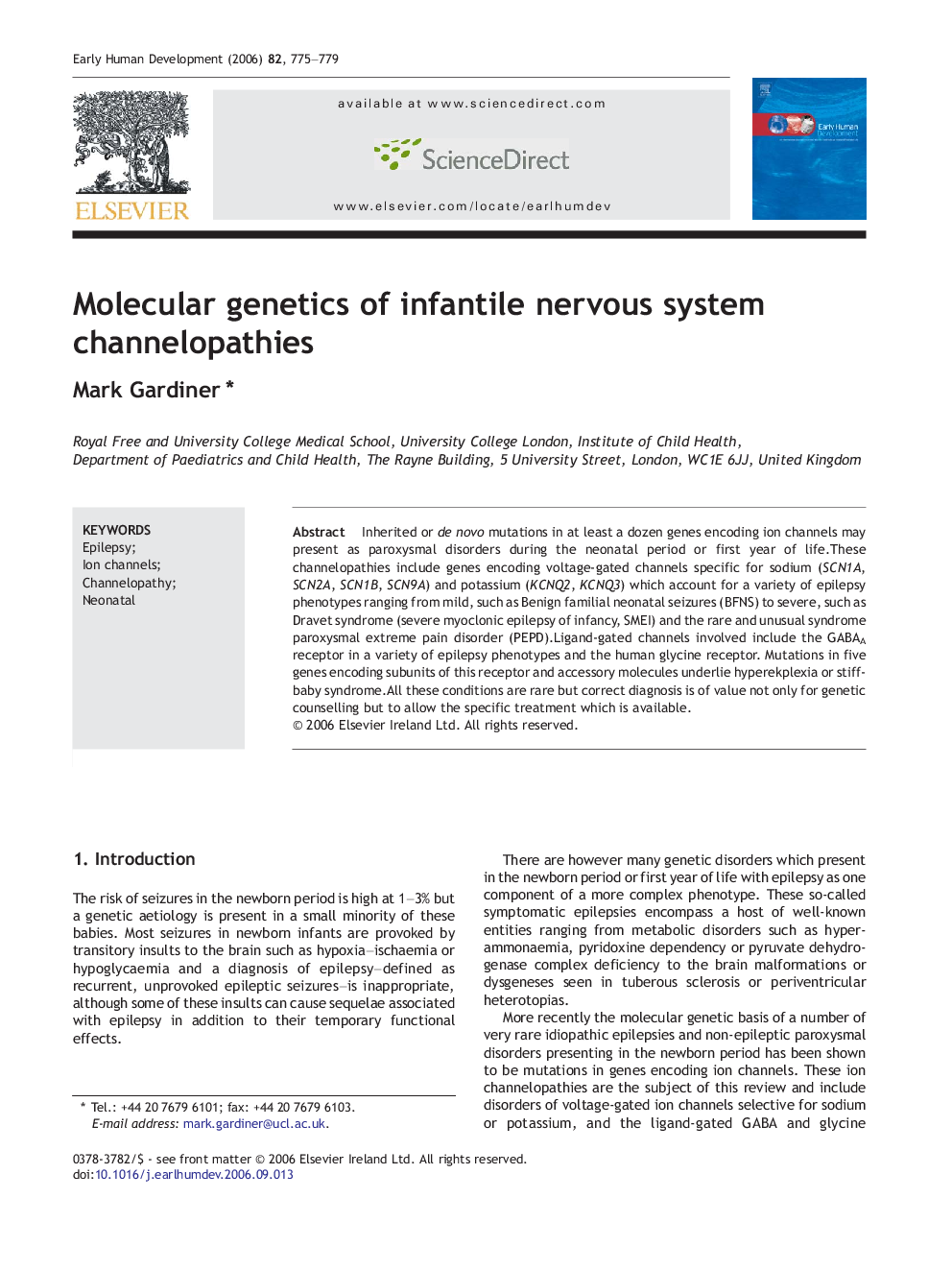| Article ID | Journal | Published Year | Pages | File Type |
|---|---|---|---|---|
| 3918760 | Early Human Development | 2006 | 5 Pages |
Inherited or de novo mutations in at least a dozen genes encoding ion channels may present as paroxysmal disorders during the neonatal period or first year of life.These channelopathies include genes encoding voltage-gated channels specific for sodium (SCN1A, SCN2A, SCN1B, SCN9A) and potassium (KCNQ2, KCNQ3) which account for a variety of epilepsy phenotypes ranging from mild, such as Benign familial neonatal seizures (BFNS) to severe, such as Dravet syndrome (severe myoclonic epilepsy of infancy, SMEI) and the rare and unusual syndrome paroxysmal extreme pain disorder (PEPD).Ligand-gated channels involved include the GABAA receptor in a variety of epilepsy phenotypes and the human glycine receptor. Mutations in five genes encoding subunits of this receptor and accessory molecules underlie hyperekplexia or stiff-baby syndrome.All these conditions are rare but correct diagnosis is of value not only for genetic counselling but to allow the specific treatment which is available.
